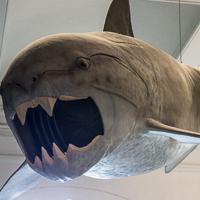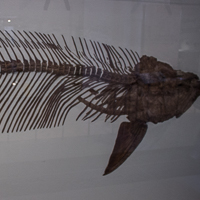
About the Collection
The towering dinosaurs that watch over the admissions desks in the rotunda are a tiny taste of the museum's vast collection of fossils from around the world and across time. The airy top floor of the museum has the highlights of the collection, separated into key paleontological periods, starting with the earliest vertebrate animals, following the evolution into Saurischian and then Ornithischian dinosaurs, then passing into the newest advancement in animals life: mammals. All of your favorite dinosaurs are here, together with hundreds of lesser known contemporaries. This floor could occupy your entire day.

What You Will See
You came here to see bones, and there are a lot of them. The usual *Tyrannosaurus Rex* and *Triceratop* are all here, and make for great photos. But there is a story here beyond the natural allure of giant reptiles. Starting in the Orientation Center, follow the lines painted on the floor to trace vertibrate evolution to the modern era. See how early invertibrates developed backbones, jaws, fins, limbs and wings, culminating in the advanced mammals that led to the modern animal kingdom, and ultimately, *homo sapiens*. Wonder at the bones, but take the time to hear the story the bones are telling.

Why You Should Go
Everyone loves dinosaurs and they are a obvious draw for visitors. Their popularity in the museum is rivaled only by the Blue Whale and the Mammal Halls. But this blockbuster collection does not rest on the natural charisma of its subjects. Serious science with contemporay applications is presented in glistening displays. The story is not about dinosaurs, how big they were, what they ate and how they lived. This is the story of scientists using the fossil record to assemble millions of years of evolutionary history. This is the story of how animal life as we currently know it--on display on the lower floors of the museum--is connected to these terrible monsters from earth's past. It's a compelling story, well worth your time. And, of course, there is a T-Rex.




